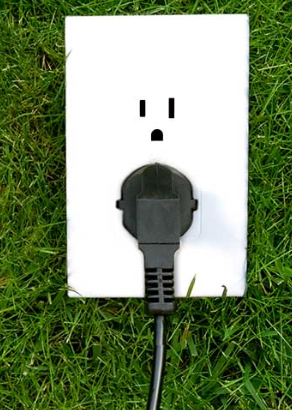Most people don’t think about the technology that delivers cable service to their home. The goal is, after all, for customers to be able to relax and just enjoy the content. But cable technology is pretty interesting, especially as it relates to energy efficiency. There are millions of set-top boxes and cable modems in America - making sure they consume as little power as possible while still doing everything we need them to do is a key challenge in ensuring cable technology remains a welcome addition in the connected home. The important mission of making better cable tech is the responsibility of an organization called CableLabs.
In many ways, cable technology begins and ends with CableLabs. They’re cable’s R&D consortium that, among many contributions, is responsible for developing high-speed DOCSIS cable modems, digital voice services and the advanced video distribution systems we utilize every time we use cable. Within CableLabs is Energy Lab, a group dedicated to creating more energy efficient cable products like new set-top boxes that will save Americans billions in energy costs. When CableTechTalk last reported on Energy Lab in March 2012, Energy Lab was testing a new “light sleep” mode for digital set-top boxes. By setting a cable box to automatically enter into a low energy mode after detecting a period of inactivity, it consumed 20 percent less energy.
 Technology like this is especially important now because in December 2012, 15 industry-leading multichannel video providers and equipment manufacturers launched a new Set-Top Box Energy Conservation Agreement. This voluntary conservation effort will include a number of new technologies like “light-sleep” mode and will result in $1.5 billion in annual residential electricity savings and reduce carbon emissions by the equivalent of four power plants each year. Improving the energy efficiency of set-top boxes can be tricky.
Technology like this is especially important now because in December 2012, 15 industry-leading multichannel video providers and equipment manufacturers launched a new Set-Top Box Energy Conservation Agreement. This voluntary conservation effort will include a number of new technologies like “light-sleep” mode and will result in $1.5 billion in annual residential electricity savings and reduce carbon emissions by the equivalent of four power plants each year. Improving the energy efficiency of set-top boxes can be tricky.
Over the years, customers have demanded (and received) more features like high-definition, multiple tuners, on-demand programming, and expansive DVR storage. And rightfully they want these features to work as quickly as they can turn the TV on, so any “low-energy” mode has to move into active mode almost instantly. To combine these features and requirements in a low consumption device is quite a feat. But the CableLabs Energy Lab is up to the task.
Today, Energy Lab is pressing the technological envelope with features like a mode referred to as “1x1” for DOCSIS 3.0 cable modems, which also apply to cable modems embedded in next-generation set-top boxes. CableLabs worked closely with manufacturers and cable service providers to define 1x1 mode and add it to the DOCSIS 3.0 specifications. In 1x1 mode, cable modems shut down all receivers and transmitters except one in each direction. This reduces power consumption during low-use times, but because the system registration state is maintained, it can quickly return to full functionality. Features like these are going to contribute to cable’s commitment to make 90 percent of new set-top boxes purchased and deployed by participating companies meet the Environmental Protection Agency’s ENERGY STAR 3.0 efficiency levels by the end of 2014.
Efficient and responsible energy usage is not a trend – it’s the new norm. And while there are many benefits for cable customers in creating more energy efficient devices, cable providers benefit as well. When a device is built to use less energy it also generates less heat and puts less stress on its components. This means the device will last longer and require less servicing and replacement. Creating efficient devices benefits everyone. Thanks to CableLabs Energy Lab and the vendors and service providers contributing to this effort, research and development for next generation cable devices with effective reduced power consumption modes are well underway. It’s a small part in the overall technological feat that is cable TV and broadband delivery, but we think it’s one of the most interesting – and important.